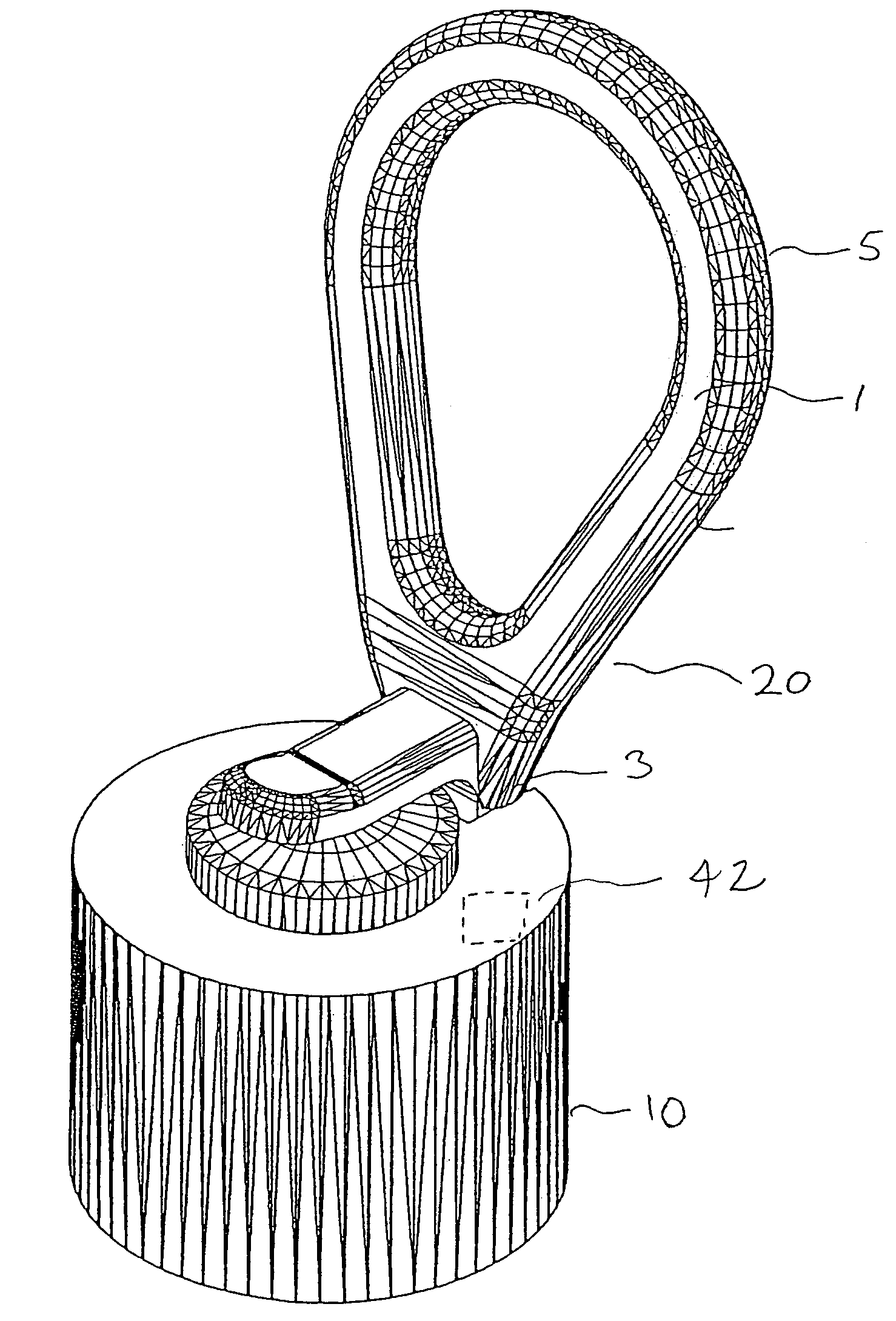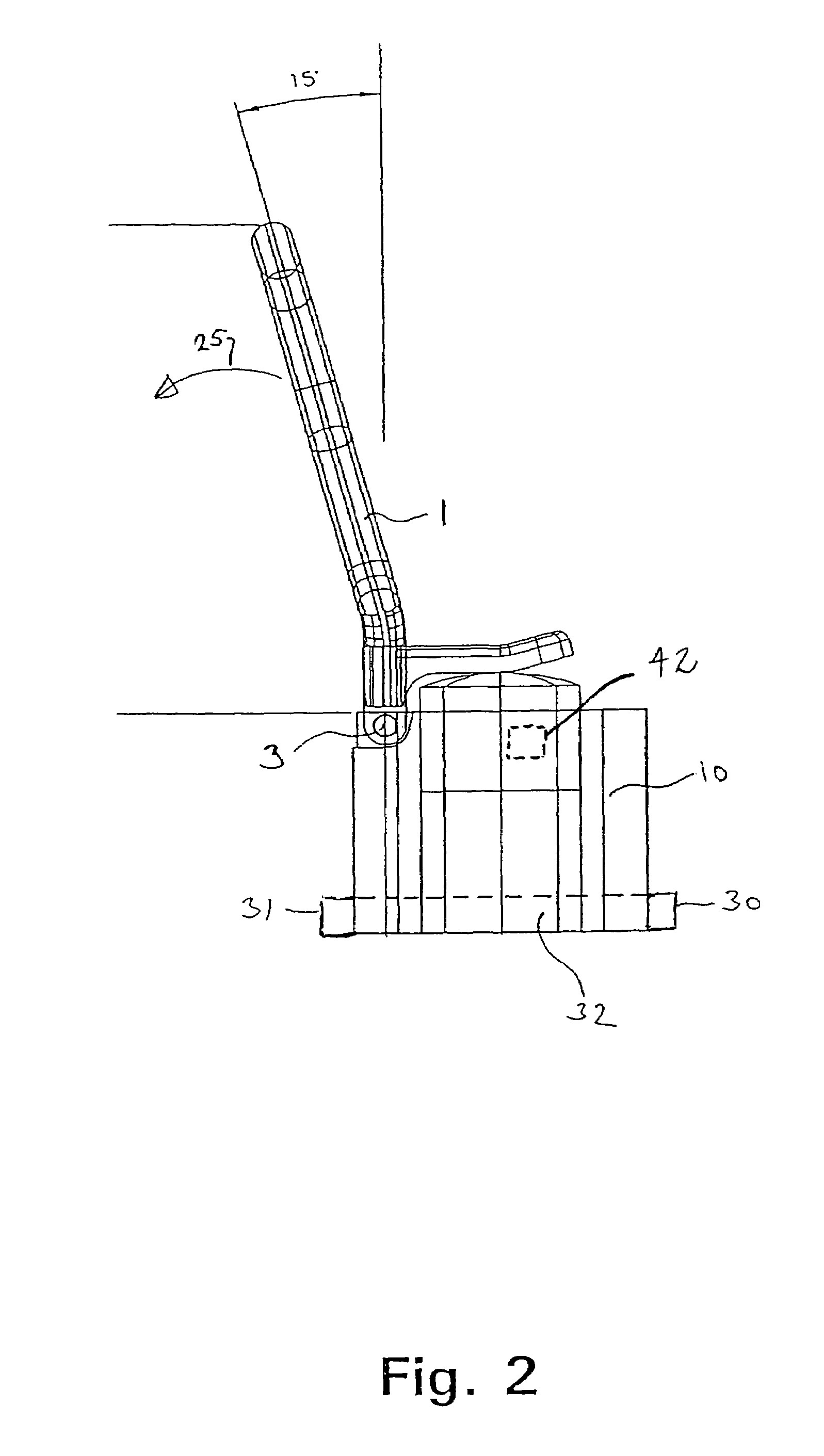Hearing aid adapted for discrete operation
- Summary
- Abstract
- Description
- Claims
- Application Information
AI Technical Summary
Benefits of technology
Problems solved by technology
Method used
Image
Examples
Embodiment Construction
[0050]FIG. 1 shows a perspective view of a controlling means 20, which is adapted for use in a CIC type of hearing aid. The controlling means comprises stiff lever 1 with a loop shaped outline 5, a switch unit 10 of the momentary type. The stiff lever is, preferably, manufactured in a metal or a thermo-plastic material, the latter may comprise reinforcement. Both types of materials may provide a lever of suitable stiffness in the preferred shape or shapes. The loop-shaped lever constitutes an engaging means, and a part of the lever may be provided with a ribbed pattern, thereby providing the hearing aid user with an item that may be firmly gripped with the fingers and used to pull out the aid from the ear canal.
[0051]The switch unit 10 comprises two gold-coated electrical contacts as seen on FIG. 2 items 30 and 31. This unit 10 may be attached to a face part of a hearing aid housing 43 as illustrated in FIG. 4. The contacts 30 and 31 may be connected by means of electrical conductor...
PUM
 Login to View More
Login to View More Abstract
Description
Claims
Application Information
 Login to View More
Login to View More - R&D
- Intellectual Property
- Life Sciences
- Materials
- Tech Scout
- Unparalleled Data Quality
- Higher Quality Content
- 60% Fewer Hallucinations
Browse by: Latest US Patents, China's latest patents, Technical Efficacy Thesaurus, Application Domain, Technology Topic, Popular Technical Reports.
© 2025 PatSnap. All rights reserved.Legal|Privacy policy|Modern Slavery Act Transparency Statement|Sitemap|About US| Contact US: help@patsnap.com



